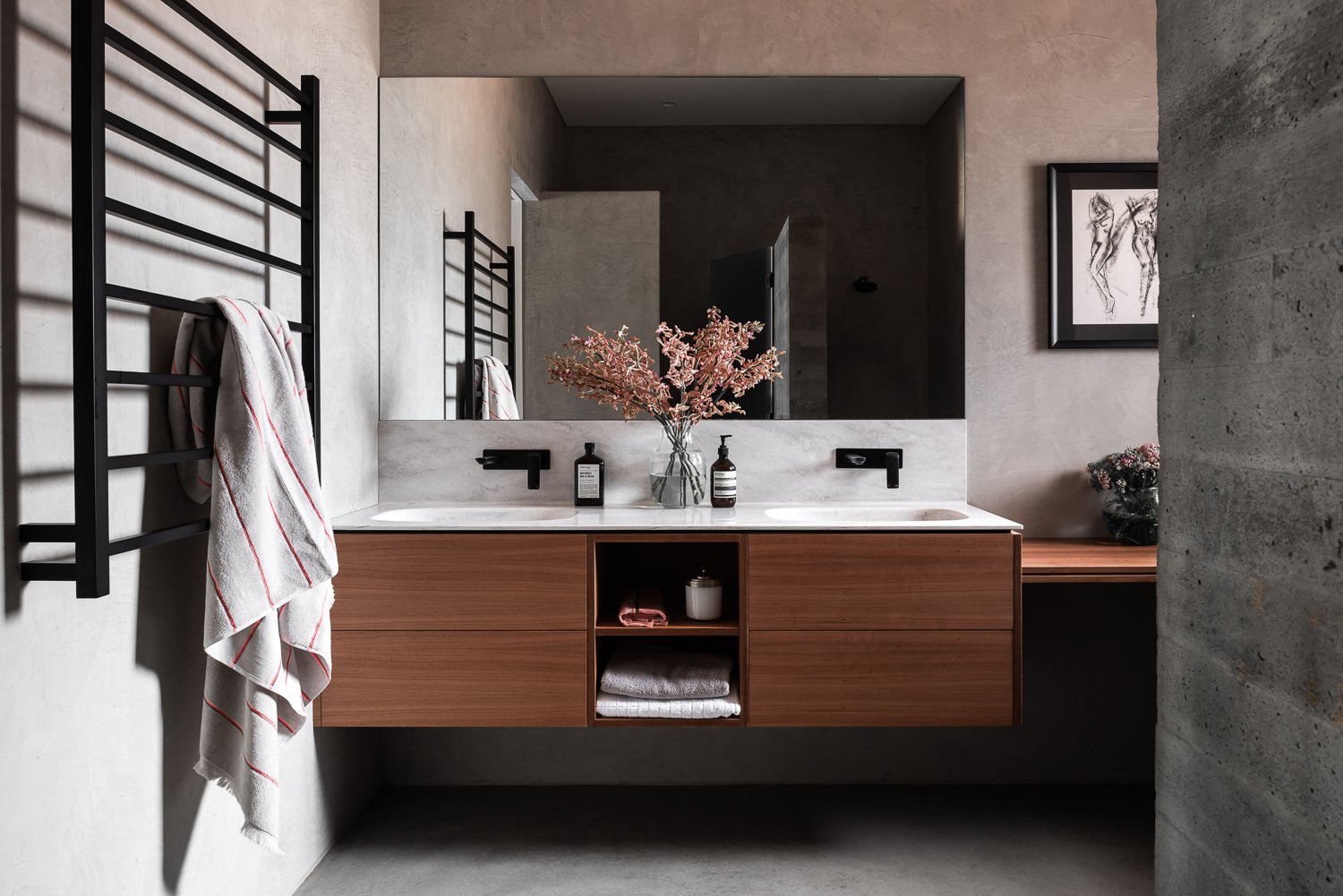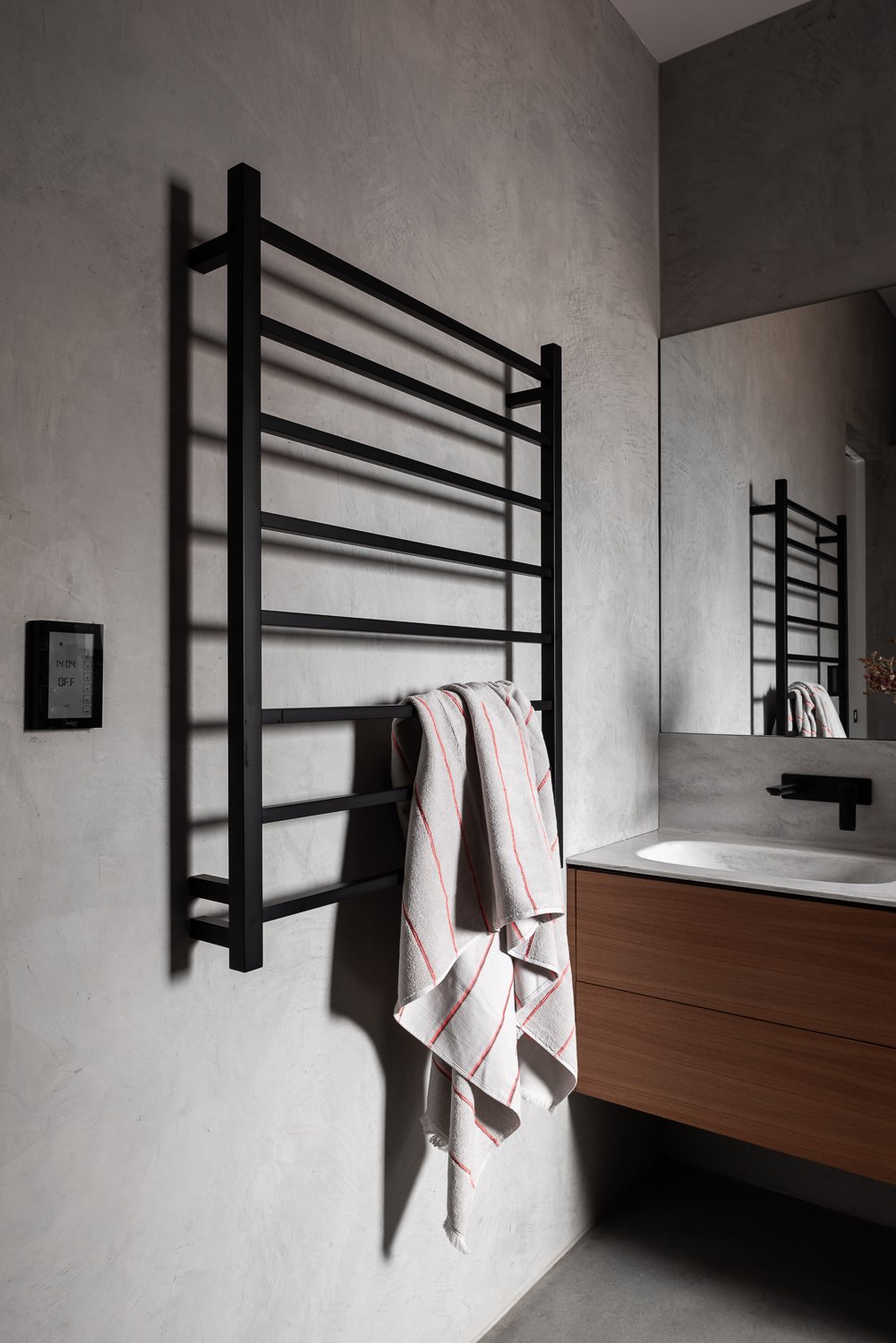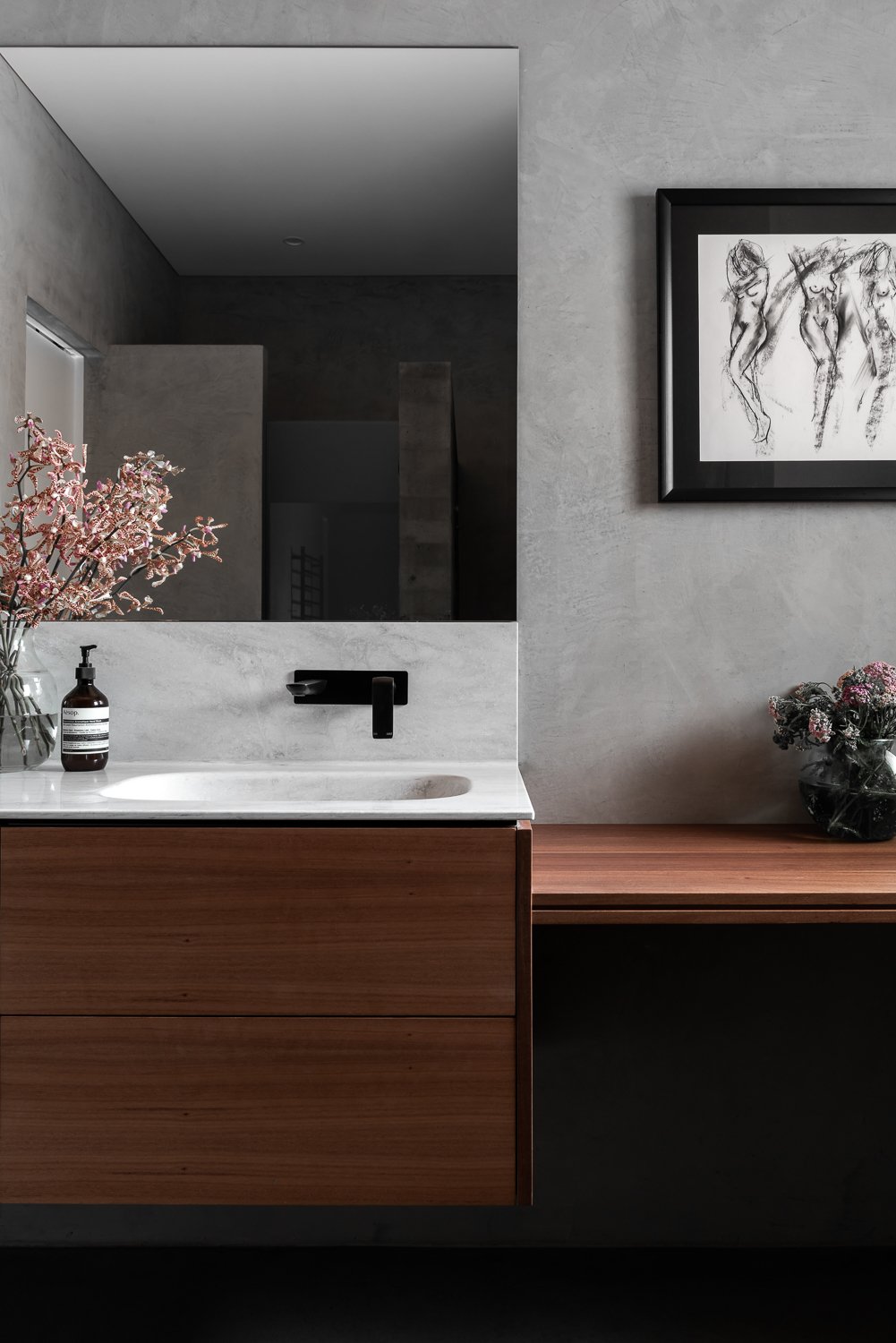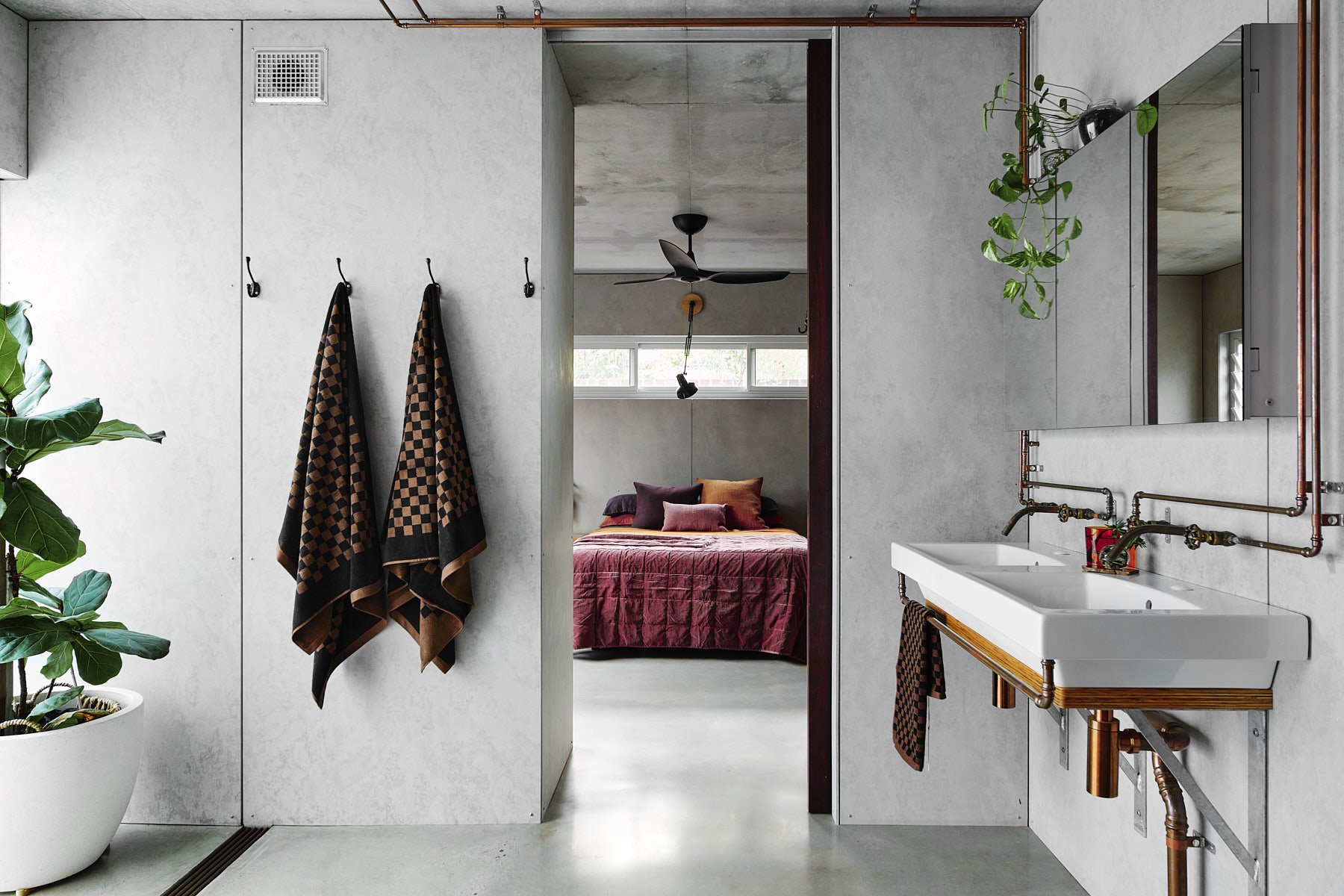Think of a bathroom and you’ll likely get a vague image of a room with lots of tiles. And, more often than not, you wouldn’t be wrong. But tiles are by no means necessary, and many people are starting to realise this, along with some of the benefits that can come from opting out of them. As the name suggests, tile-free bathrooms use no tiling in favour of other materials that don’t need grout. And over the last couple of years, we’ve seen more and more clients choosing this route, so it’s high time we share some of what we’ve learnt.
WHAT WE LOVE ABOUT THEM
Walk into any tile-free bathroom and you’ll instantly recognise how suited it is to the modern minimalist design style. The seamless finish is calming to the eye and has the added benefit of making a space appear larger and more spacious. But they boast another benefit that we think is even more important: a low maintenance finish. Lacking the grout lines where dirt and mould can build up, tile-free bathrooms are often much easier to clean and, therefore, end up being much more hygienic in the future.
TYPES OF TILE-FREE BATHROOMS
There are lots of ways to implement a tile-free bathroom, so it should be with the help of an architect, designer or bathroom expert that you work out which is best for you. But, in this blog, we’ll discuss the three alternative materials we’ve used, along with some project examples to inspire your own ideas. Keep in mind that application should all be done by professionals.
Polymer Plaster
Polymer plaster is a popular choice because it doesn’t need the extensive chemicals that alternatives often require. This makes it an ideal option for those keen to design non-toxic homes, while also being a great product that is naturally water resistant. The application involves a primer followed by waterproofing, a basecoat and then two coats of polymer to ensure a waterproof, durable finish. If chipping occurs throughout its lifespan, it’s relatively easy to complete patch repairs.
At our Langsford Street project, our clients were looking for a home that was as low-maintenance as possible, resulting in a completely tile-free home. Polished plaster was the chosen solution for its lack of grooves and durability to survive young kids. The trendy style was also the perfect addition to a design that didn’t hold back from experimenting with new materials. A big thanks to the Troweled Earth crew for supplying and applying the polymer plaster in this project.
Stolit Milano
Next, let’s look into Stolit Milano from Sto Australia. This cement-free acrylic-based system is highly customisable. It can be tinted to a wide range of colours and applied to achieve a textured or ultra-smooth finish or anything in-between. Application first involves trowelling a flexible waterproof membrane followed by a sheet of mesh that reduces movement of the final product. Only then can the actual Milano (which is also waterproof) be applied to whichever textured finish is desired. Light damage can also be patched relatively easily.
At our Arundel Street project, we also applied StoArmat render under the finish Milano as this is high-impact and offers better crack-resistance.
Stolit Milano in action at our Arundel Street project.
CSR Cemintel Barestone
This option is slightly different from the previous two because, as panels, there will still be grooves. The compressed fibre cement panels are typically much larger than tiles, though, and still require no grout. This makes it a good option for those that want to avoid grout, but who still like the design aesthetic of the grooves. They come in four colourways and have a stain resistant coating to improve durability. While the panels are waterproof themselves, standard waterproofing is still necessary for extra protection. Damaged panels can also be individually replaced if needed.
A beautiful example of this product can be seen in our Preston Point Road project where the panels are the perfect choice to achieve a natural, minimalistic style while taking advantage of the grooves to add height and texture to the room. This, along with exposed copper water pipes and creative design choices throughout, resulted in an incredibly unique, low-maintenance home.
WHAT TO CONSIDER WHEN CHOOSING A TILING ALTERNATIVE
Deciding to go tile-free is one decision, but deciding how to do so is a different one entirely. To ensure full understanding of material specifications we highly recommend you get the help of a professional. However, we think there are three main criteria to consider:
Aesthetics: Your personal taste and the design style of your home should, of course, play a significant role in your decision making.
Practicality: Ensure the material is suitable for the area it will be applied to. A kid’s bathroom, for example, should utilise more durable materials as they’re more likely to get damaged.
Individual specifications: Always consult with a specialist of each material to ensure you’re fully aware of any limitations or maintenance requirements of the product. Some, for example, can be sensitive to acidic products—something you’ll certainly want to be aware of before you go to clean your bathroom for the first time.
BUILDING TIPS
The success of any tile-free bathroom is not just down to the product (which is somewhat superficial), but equally down to the concrete formwork and preparation. Every bathroom will be different, but to reduce the risk of waterproofing issues down the line, the concrete underfloor should be formed with a lip around the sides to create a very shallow pool. Then, it’s important to remember that the more components that are involved, the higher the risk to the waterproofing. Both the walls and floors should be tile-free and, ideally, drains should be designed as part of the concrete formwork, too.
The drains at Preston Point Road were part of the concrete formwork to create a seamless, waterproof design.
Tile-free bathrooms are a great new trend that, when done right, can be beautiful and incredibly practical. But, while the result can be well worth it, it’s important to understand that this is a high-risk choice if not done properly. Always get professional advice for your specific circumstances.







